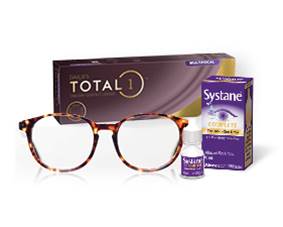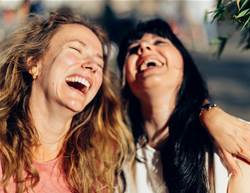As we age our eyes change in ways that are nearly universal. Our lenses gradually harden, making it harder to focus on things up close so you may find yourself holding things further away to see them more clearly. This condition, called presbyopia, usually happens between the age of 40 and our early 50s.
Losing focus
“One billion people around the world suffer from presbyopia and it’s the single most common reason why people start to wear glasses,” explains optometrist Sujan Hong.
Sadly there’s no way to head this off. But the good news is there’s plenty of options out there you may not be aware of to help you see clearly again.
Let’s start with the basics. If your distance vision is good, then a pair of reading glasses will be sufficient. But it’s worth noting that because the lens is only focused for reading, anything not at that distance will be blurred. For clear vision at all distances, multifocal glasses will allow you to see both near and far by looking through different parts of the lens.
Thanks to modern technology, there’s also another option - multifocal contact lenses. “These offer all the benefits of multifocal glasses but in a more natural way, because you’re not looking through different parts of the lens. Instead, your brain adjusts to the lens so you can see clearly at multiple distances with minimal head movement,” explains Sujan.
If you are averse to the idea of contacts, think again. “Modern contact lenses are very soft and comfortable so you may not notice you are wearing contact lenses at all,” explains Sujan. She recommends TOTAL1 multifocal contact lenses as an exceptionally comfortable option.
“It’s really important for people to know that there are different choices available,” she says. And it pays to think about what options will suit your lifestyle. It may be that having several options works best for you: for example, using multifocal contact lenses for tennis and reading glasses when reading in bed. “Just like you have different pairs of shoes for different occasions, there are different options depending on your needs,” says Sujan.
Dry eye syndrome
Eyes feeling dry, sore and itchy? Dry eye can affect anyone at any age and it occurs as a result of our eyes not producing enough tears or producing poor quality tears.
“Even watery eye can be a symptom of dry eye as it can be an indication of too much tears being produced to compensate for dry eye” explains Sujan. With dry eye symptoms becoming increasingly common, applying lubricating eye drops regularly can help alleviate these symptoms.
“There are so many eye drops out there, it can be very confusing” says Sujan. “Your tears are made up of a combination of oil and water and depending on what’s missing, you may need different types of eye drops,” she says. An optometrist can determine which drops will help you.
What you eat and drink can have an impact on dry eye as well. “Good hydration helps with the watery layer of your tear film and eating healthy fats (like oily fish, nuts and seeds) can help with the oily layer of your tear film.”
While wearing some contact lenses for long periods of time can also cause contact lens-related dry eyes and discomfort, some contact lenses have technologies that are designed to help reduce these symptoms. “Contact lenses such as TOTAL1 that has SmarTears technology which supports the tear film to help minimise contact lens-related dry eye symptoms. So I always say not all contact lenses are created the same.”
Feeling it’s time to see clearly again? Speak to an optometrist about which options may be right for you.
Always read the label. Follow the directions for use. If symptoms persist, please talk to your health professional.
Disclaimer: This article is kindly brought to you by Alcon. Sujan Hong is a qualified optometrist and a member of the Professional Affairs team at Alcon. ANZ-DTM-2100005
.jpg&h=630&w=1120&c=1&s=1)










